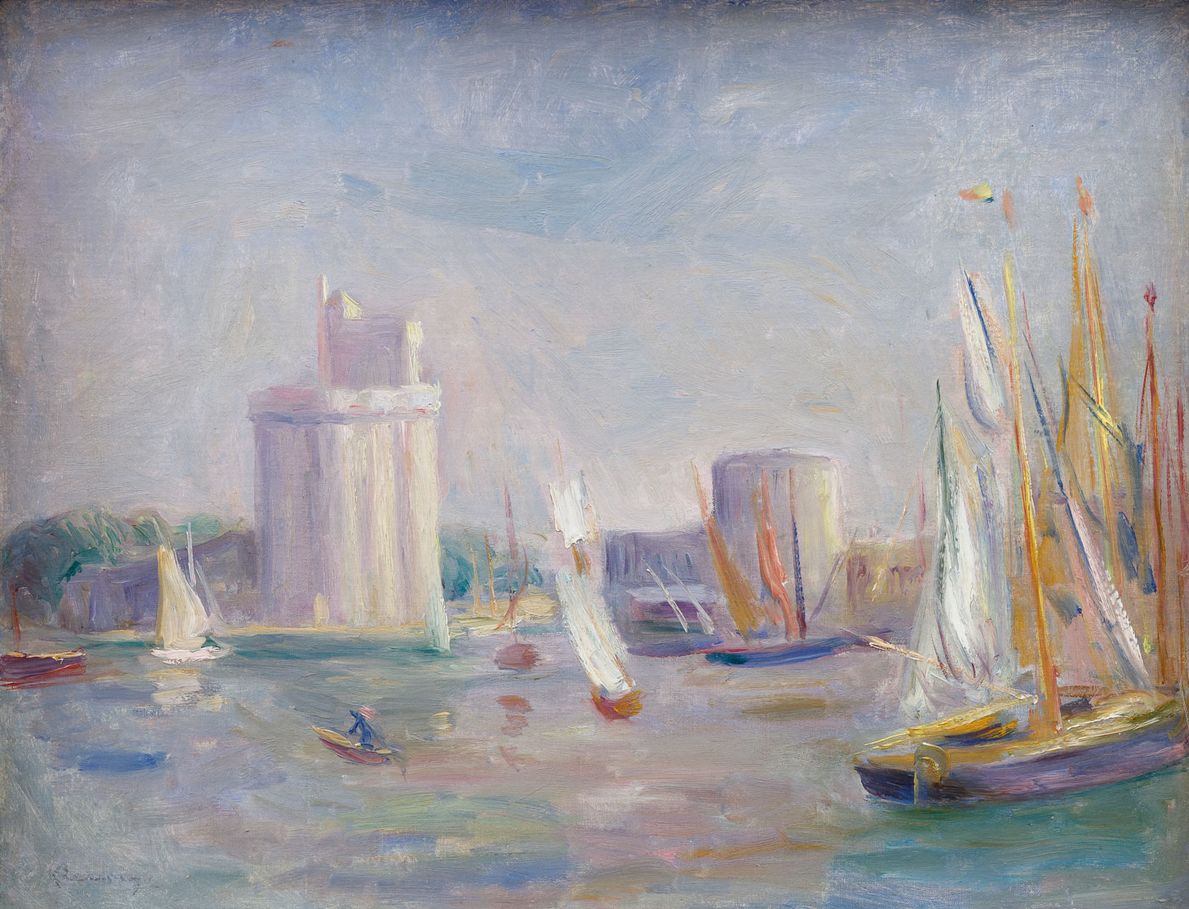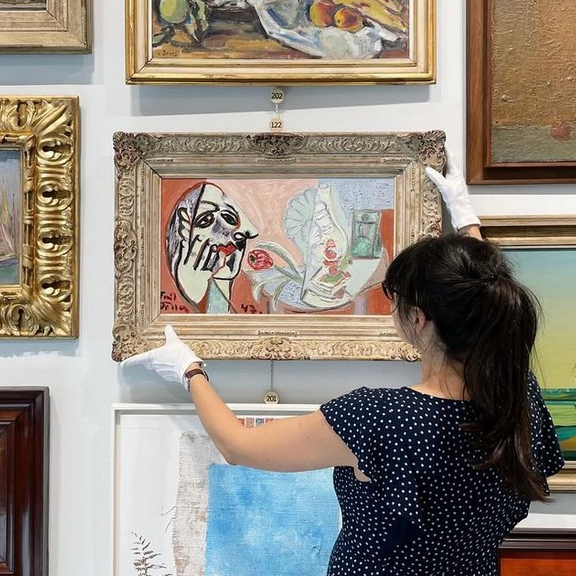
oil on canvas
circa 1896
lower left
32 × 41 cm
framed
Pierre-Auguste Renoir belongs to artists known not only by a narrow group of art historians but without exaggeration by the entire cultural world. He is famous primarily as a painter, but he also worked as a graphic artist and sculptor. He became famous, above all, as one of the leading figures of the impressionist movement he co-founded at the end of the 1860s. At first, he was interested in studying Old Masters and was also soon accepted to the Paris Academy. The turning point in his work was contact with artists outside this institution, especially Alfred Sisley, Frédéric Bazille and Claude Monet, with whom he went to the forest of Fontainebleau. It is no surprise to his further development that he was encouraged to paint in plein air by Narciso Diaz, one of the most famous personalities of the Barbizon school. At the end of the 1880s and in the 1890s, Renoir travelled more frequently and found new inspiration not only within the French borders. These journeys took him, among others, to the port of La Rochelle, whose rich history dates back to ancient times, but the contemporary port was established in the 14th century. Two fortified towers represent the oldest part, the Tour de la Chaîne and the Tour St-Nicolas, which, together with swaying sailboats and boats, dominate the presented work full of optimistic colours and light. In the 1890s, Renoir adopted a warmer colour tonality and, in contrast to the earlier clearly defined impressionist brushwork, a smooth and seemingly blurred painting style. We can thus perceive the presented work as an insight into the artist’s mind at the end of the 19th century.
The artwork has an interesting provenance history. As late as the interwar period, it was owned by Ambroise Vollard, an important French dealer of modern art, whose collections included, e.g., the works of Paul Cézanne, André Derain, Pablo Picasso, and Vincent van Gogh. Vollard was also the author of Renoir’s biography, and Renoir portrayed him more than once. On 8 January 1936, the painting was bought from Vollard by the famous Paris gallery Bernheim-Jeune, where it was kept under the number 26804 (as evidenced by the stamp on the reverse of the stretcher). Two days later, it was sold again. On 18 March 1964, it was offered at the Galliéra Palace in Paris (cat. No. 46, described and reproduced). In 2021, it was exhibited by Thierry De Maigret at the Drouot-Richelieu gallery in Paris (Tableaux anciens, du XIXe et modernes – Miniatures – Sculptures – Objets d'art et ameublement, June 2021, cat. No. 110).
The painting was presented at the artist’s recent solo exhibition (D. Marchesseau: Renoir, Fondation Pierre Gianadda, 20. 6. – 23. 11. 2014, p. 207, cat. No. 59, as evidenced by the stamp on the reverse of the stretcher) and published and reproduced in professional literature (Renoir, Tableaux, pastels et dessins de Pierre-Auguste Renoir par Ambroise Vollard, Chez Ambroise Vollard, Paris 1918, volume II., fig. p. 2; Guy-Patrice / M. Dauberville: Renoir – Catalog raisonné des tableaux, pastels, dessins et aquarelles, 1895–1902, volume III., Éditions Bernheim-Jeune, Paris 2010, fig. p. 129, No. 1908). Based on the above, this painting, presented in an elegant frame, can be considered an exceptional opportunity for art collectors to acquire a mature work of an artist of world-renowned fame and importance. The work originally comes from a high-quality and unique post-revolution collection. Assessed during consultations by prof. R. Prahl, CSc., and doc. M. Theinhardt, CSc. The expertise of PhDr. K. Srp is attached.







